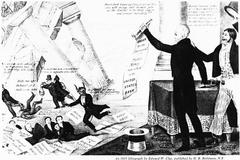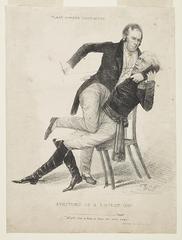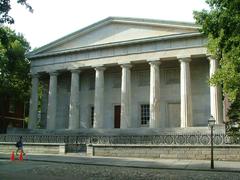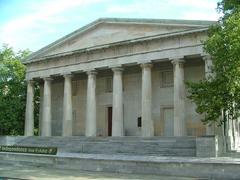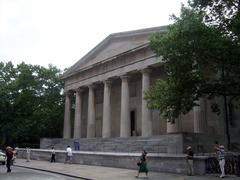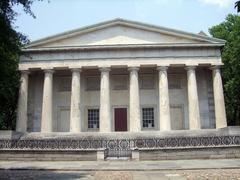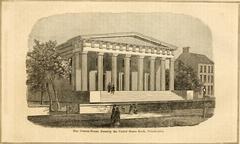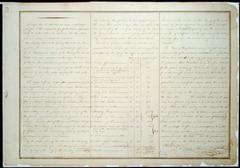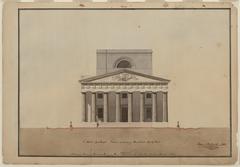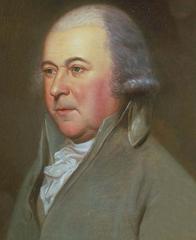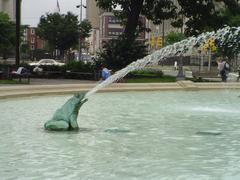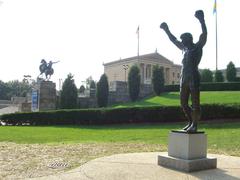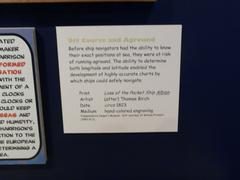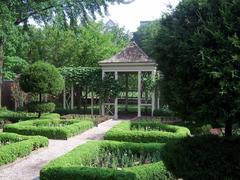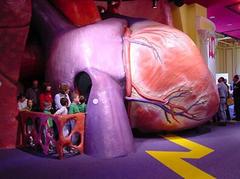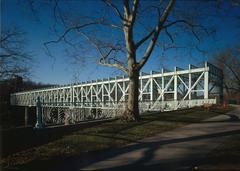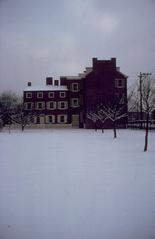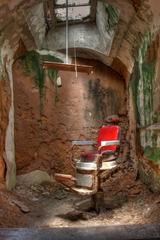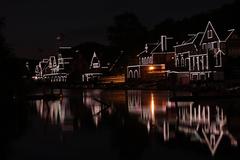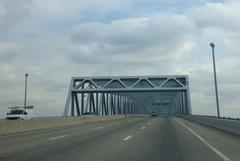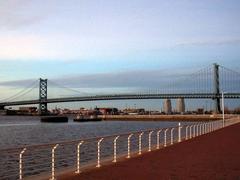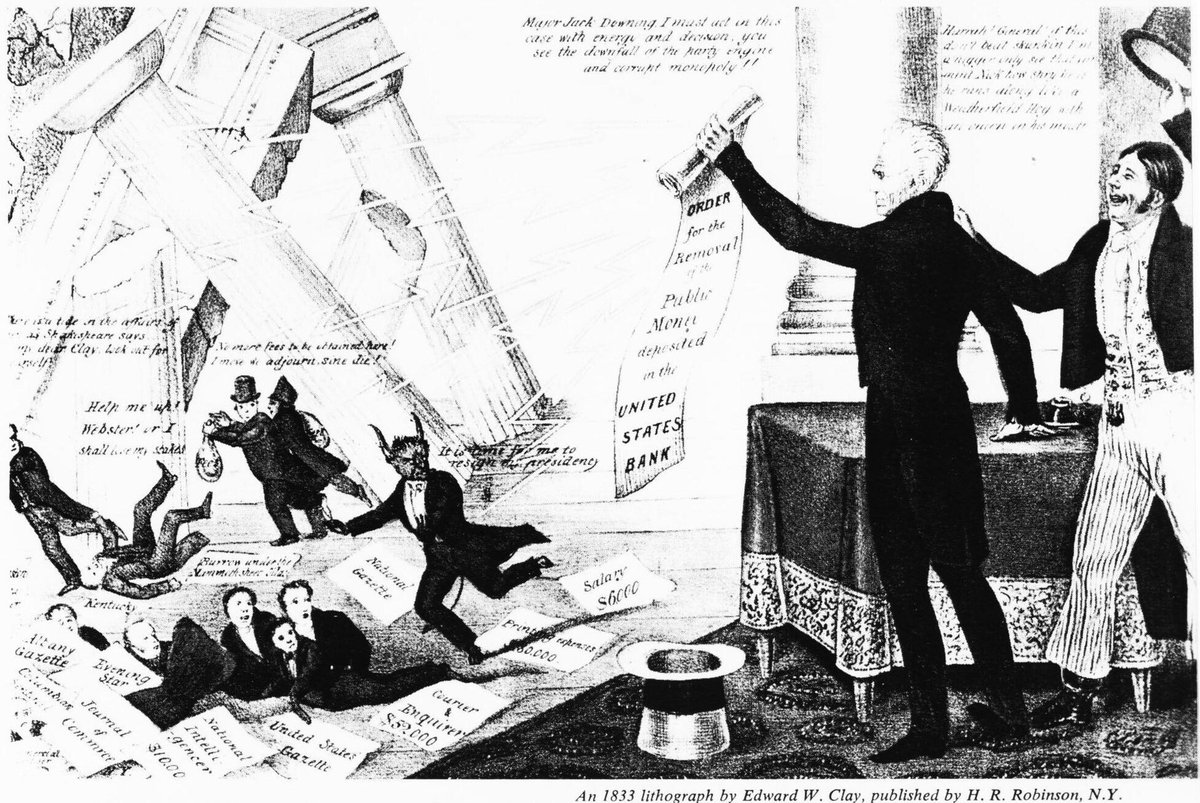
Visiting the Second Bank of the United States in Philadelphia: History, Tickets, and Tips
Publication Date: 01/08/2024
Introduction
The Second Bank of the United States in Philadelphia stands as a monument to America’s early financial history and architectural innovation. Established in 1816, this institution was pivotal in stabilizing the national economy post-War of 1812, offering a centralized banking system that the nascent nation desperately needed (Philadelphia Fed). Designed by the renowned architect William Strickland, the building is an exquisite example of Greek Revival architecture, modeled after the Parthenon in Athens and constructed with Pennsylvania blue marble (Philadelphia Fed). Today, the Second Bank is part of the Independence National Historical Park and houses a Portrait Gallery featuring works by prominent artists like Charles Willson Peale, offering visitors a rich cultural and historical experience (NPS). This guide aims to provide a comprehensive overview of the Second Bank’s historical significance, architectural highlights, and practical visitor information, ensuring a memorable visit to this iconic American landmark.
Table of Contents
- Introduction
- Historical Background
- Current Use and Preservation
- Visitor Information
- Nearby Attractions
- FAQ
- Conclusion
Historical Background
Establishment and Early Years
The Second Bank of the United States was established in 1816, following the financial turmoil that ensued after the War of 1812. The need for a stable national currency and a central banking system became evident, leading to the creation of the Second Bank. President James Madison signed the bill creating the bank in April 1816, and by January 1817, the bank opened for business in Philadelphia (Philadelphia Fed).
Architectural Significance
The Second Bank’s building, located at 420 Chestnut Street, is a prime example of Greek Revival architecture. Designed by architect William Strickland, the structure was modeled after the Parthenon in Athens. Constructed between 1819 and 1824, the building is made of Pennsylvania blue marble and cost half a million dollars to complete. The design includes a vestibule, a main lobby, and a central banking room, which was the largest space on the first floor (Philadelphia Fed).
Role in the Economy
The Second Bank played a crucial role in stabilizing the American economy. It was responsible for managing the country’s currency, dealing with war debt, re-establishing trade, and pulling the economy out of its post-war slump. The bank also had branches in various states, including Mobile, Alabama (1826), Nashville, Tennessee (1827), and Portland, Maine (1828), among others (Philadelphia Fed).
Nicholas Biddle’s Presidency
Nicholas Biddle became the president of the Second Bank in 1823. Under his leadership, the bank became one of the most influential financial institutions in the world. Biddle’s tenure was marked by efforts to stabilize the national currency and regulate state banks. However, his presidency also saw the beginning of the bank’s contentious relationship with President Andrew Jackson (Philadelphia Fed).
The Bank War
The “Bank War” refers to the political struggle between President Andrew Jackson and Nicholas Biddle over the renewal of the bank’s charter. In 1832, a request was submitted to Congress to renew the bank’s charter four years before it was set to expire. President Jackson vetoed the bill, citing concerns over the concentration of financial power and the lack of regulation. This veto led to a significant political battle, ultimately resulting in the expiration of the bank’s charter in 1836 (Philadelphia Fed).
Post-Charter Expiration
After the expiration of its charter, the Second Bank continued to operate as a state-chartered institution under Nicholas Biddle’s leadership until 1841. However, the bank eventually went out of business, and the building sat vacant until the federal government purchased it in 1845. The structure was then repurposed as the Philadelphia Customs House, a role it served until 1935 (Philadelphia Fed).
Current Use and Preservation
The Portrait Gallery
Today, the Second Bank building houses a Portrait Gallery, featuring many paintings by Charles Willson Peale, one of America’s top portrait artists during the American Revolution. The gallery provides a glimpse into the lives of notable figures from the era, including politicians, military leaders, and other influential individuals. The collection also includes portraits by other artists, such as British pastel artists James and Ellen Sharples (Lonely Planet).
Part of Independence National Historical Park
The Second Bank of the United States is now part of the Independence National Historical Park. The building is preserved as a historical site, allowing visitors to explore its architectural beauty and historical significance. The Portrait Gallery within the bank offers an educational experience, showcasing the art and history of the early United States (Roadtrippers).
Visitor Information
Location and Accessibility
The Second Bank of the United States is located at 420 Chestnut Street, Philadelphia, Pennsylvania. It is easily accessible and situated near other historical landmarks such as Independence Hall and the Liberty Bell.
Opening Hours and Ticket Prices
The site is open to the public, and visitors can explore the Portrait Gallery and learn about the bank’s history through various exhibits. For more information on visiting hours and ticket prices, visitors can contact the site at 215-965-2305 or visit the National Park Service website.
Contact Information
For additional details, visitors can call 215-965-2305 or check the official National Park Service website.
Nearby Attractions
The Second Bank of the United States is located in a historically rich area of Philadelphia. Nearby attractions include:
- Independence Hall: Known as the birthplace of American government, this building is where the Declaration of Independence and the U.S. Constitution were debated and adopted (Lonely Planet).
- Liberty Bell: An iconic symbol of American independence, located just a short walk from the Second Bank.
- Philadelphia Museum of Art: Home to an extensive collection of art, including works by renowned artists such as Van Gogh, Picasso, and Duchamp (Lonely Planet).
- Reading Terminal Market: A bustling market offering a variety of food and shopping options, perfect for a break during a day of sightseeing (Lonely Planet).
FAQ
Q: What are the visiting hours for the Second Bank of the United States? A: The visiting hours vary by season. It is recommended to check the National Park Service website for the most up-to-date information.
Q: Is there an admission fee to visit the Second Bank of the United States? A: Admission to the Second Bank is generally free, but special exhibits or events may have a fee. Check the National Park Service website for details.
Q: Are guided tours available? A: Yes, guided tours are available. Please contact the site directly or visit the National Park Service website for more information on tour schedules and availability.
Q: Is the Second Bank of the United States accessible to visitors with disabilities? A: The site is partially accessible to visitors with disabilities. For specific accessibility information, please contact the site directly or visit the National Park Service website.
Conclusion
Visiting the Second Bank of the United States in Philadelphia offers a unique opportunity to delve into America’s early financial history and appreciate its architectural grandeur. From its vital role in stabilizing the post-War of 1812 economy to its contentious relationship with President Andrew Jackson, the bank’s history is both rich and complex (Philadelphia Fed). Today, the building serves as a Portrait Gallery within the Independence National Historical Park, featuring an extensive collection of portraits by artists like Charles Willson Peale, providing a window into the lives of influential figures from America’s formative years (Visit Philly). Whether you’re an architecture enthusiast, a history buff, or simply a curious traveler, the Second Bank offers a rich and rewarding experience. Plan your visit today to explore this architectural gem and immerse yourself in the history and culture of Philadelphia. For more updates and information, download our mobile app Audiala, follow us on social media, or check out other related posts on our website.
References
- Philadelphia Fed. (n.d.). Second Bank of the United States. Retrieved from Philadelphia Fed.
- NPS. (n.d.). Second Bank of the United States. Retrieved from NPS.
- Visit Philly. (n.d.). Second Bank of the United States. Retrieved from Visit Philly.
- Roadtrippers. (n.d.). Second Bank of the United States. Retrieved from Roadtrippers.
- Lonely Planet. (n.d.). Second Bank of the United States. Retrieved from Lonely Planet.
- ushistory.org. (n.d.). Second Bank of the United States. Retrieved from ushistory.org.
- philatravelgirl.com. (n.d.). Historic Philadelphia: Portrait Gallery. Retrieved from philatravelgirl.com.
- phlvisitorcenter.com. (n.d.). Second Bank Portrait Gallery. Retrieved from phlvisitorcenter.com.
